As an art student finishing her degree, Rachel Burke’s final year project revolved around her home place - the family dairy farm in Newtownshandrum, Co Cork.
In the intervening years she has adopted a new farm and home place in Threecastles, Co Kilkenny, where she lives with her husband Ruairí Carroll and their three children.
“I’ve three boys, so they’ve made me a Kilkenny woman. Although my dad would hate to hear that,” Rachel adds dubiously.
I ask the defining question, who does she support in the hurling?
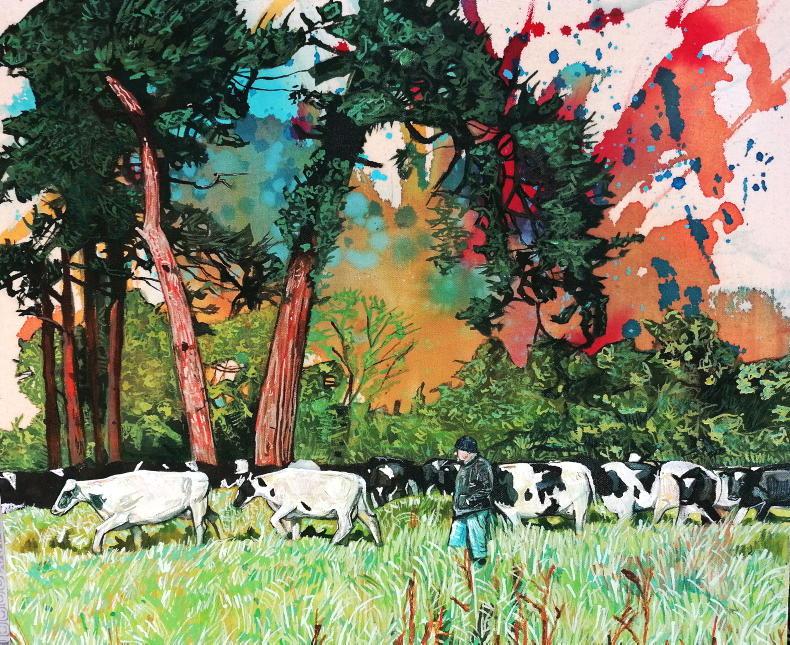
“I’m on both fences. When my own lads have their Kilkenny jerseys on, I support Kilkenny.”
But one home place is not necessarily lost in finding another. A recent project of Rachel’s has brought her painting back to where it first began - on the farm.
Last year Kilkenny County Council and Creative Ireland put a call-out looking to fund a project for an artist, on the premise they would engage a group that had limited access to arts and creativity. An exhibition of the work would take place, as well as a book based on the paintings being produced.
Rachel had just the idea.
“My husband’s a beef farmer and a sculptor,” she says. “I do feel sometimes farmers can be a little bit isolated.
“So I came up with the idea of engaging local farmers and I designed a project around that. I could do a painting of their home place. They would give me the guidance as to what they wanted.”
Before Rachel submitted her proposal, she got in touch with the local IFA branch to see would farmers be interested. Some were sceptical at first, but overall she got a great response.
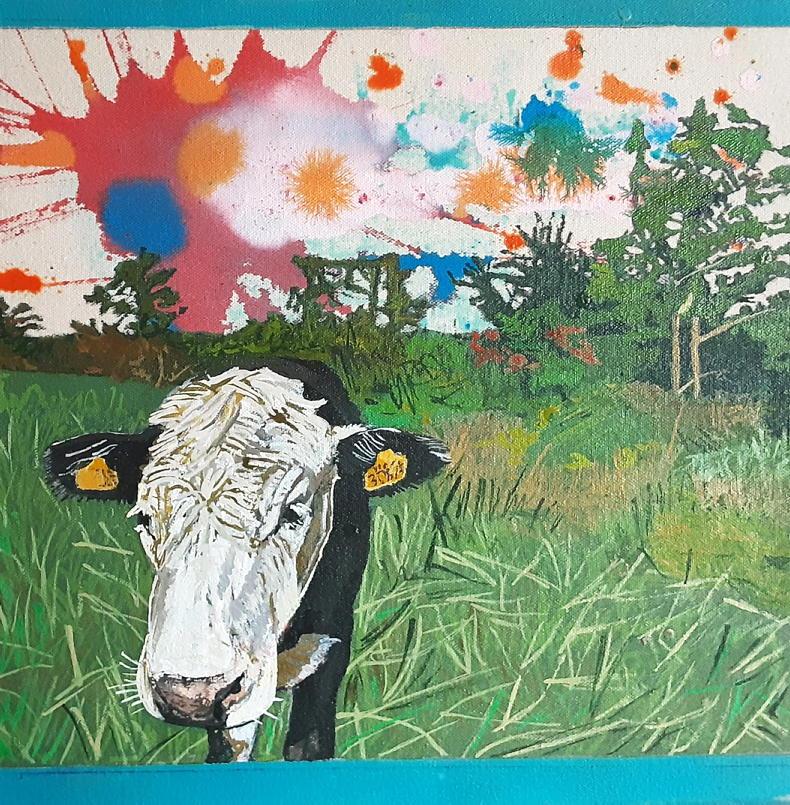
She was awarded the funding based on her proposal and had individual introductory meetings with all the participating farmers before the pandemic.
Rachel describes the project as a “visual history of Threecastles”. She also included her father’s farm in Cork, as well as her and Ruairí’s farm.
“It was actually really great going to meet all the farmers. I’d go to their houses and they’d have all the buns and cakes out. They were very welcoming.
“They’d be going through all the old photos and they really got on board. They walked me around the farm, we took photos and talked about the history.”
A key part of Rachel’s project was that she wanted to portray the farm as the farmers saw it.

“There were some farmers and they had really good old photos. Some from years ago where they’re harvesting and they’d be sitting down drinking tea. I put those into paintings. Other people, they had really old buildings they wanted to use. One farmer just wanted a cow in the field. They said they wanted this particular thing and I would do it in my own style.”
Originally, the exhibition was supposed to be held in March, but it was pushed to October due to the lockdown and then again to December because of the second lockdown. It took place on the weekend of 4 and 5 December, when the book was also launched.
This allowed Rachel to create a much larger body of work than expected, doing up to four paintings on some farms.
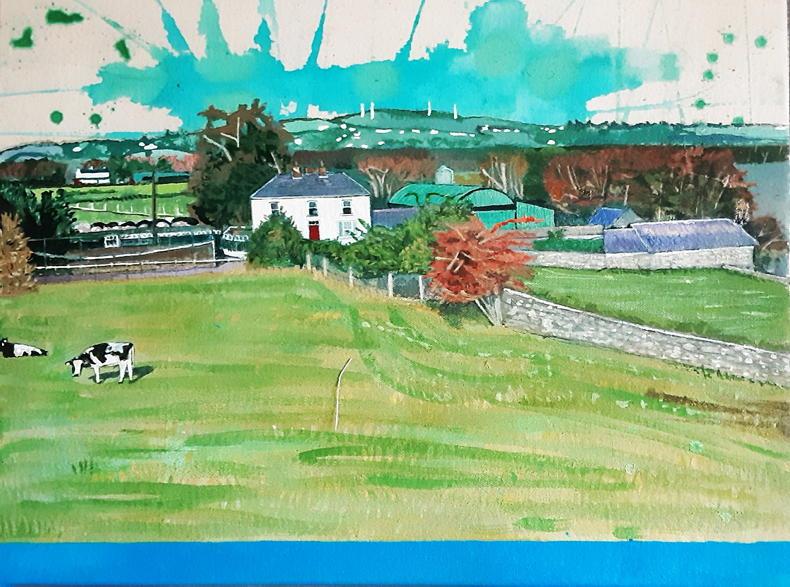
Overall, the project was a great success. So much so that Rachel has applied for funding to work with the women of Threecastles on a further project. The proceeds from the book are going towards the local hall.
As part of the project Rachel also had to bring the paintings to the local primary school and facilitate a response project with the pupils.
Although the project was done on the basis of engaging a group in art that wouldn’t normally have access, Rachel feels farmers are far more creative than they’re often given credit for.
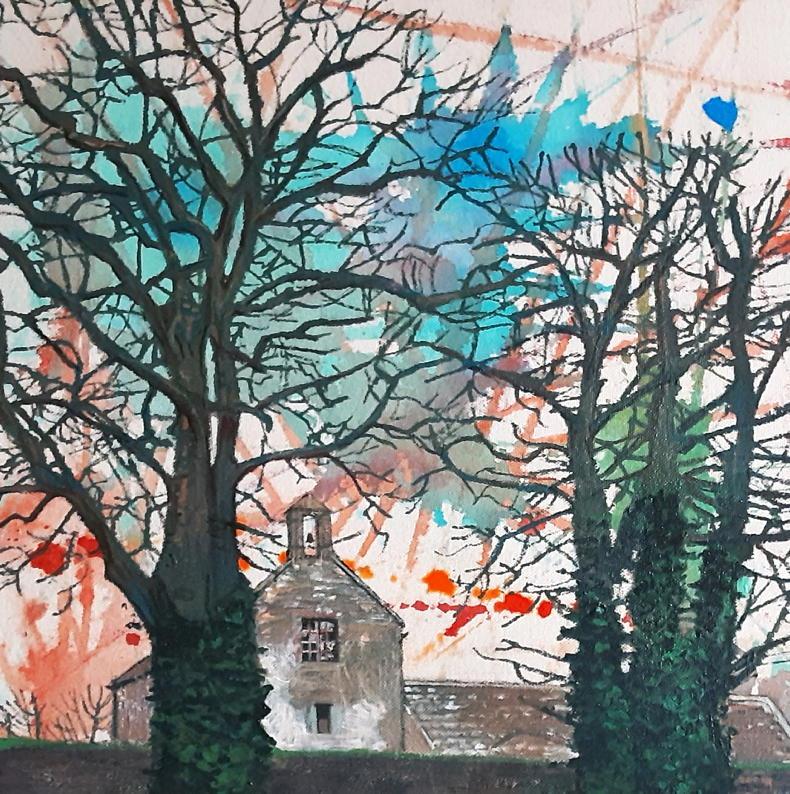
“I think the farmers really enjoyed the fact that you were engaging with them. I think a lot of farmers, they’re really poetic, they’re really deep and they’re really connected to the land.
“They actually loved seeing the paintings too. With my work there are abstract backgrounds and it does look like you’re almost capturing a memory. It’s not photo realistic.”
For Rachel, the project deepened her connection with Threecastles and also got her back painting fulltime.
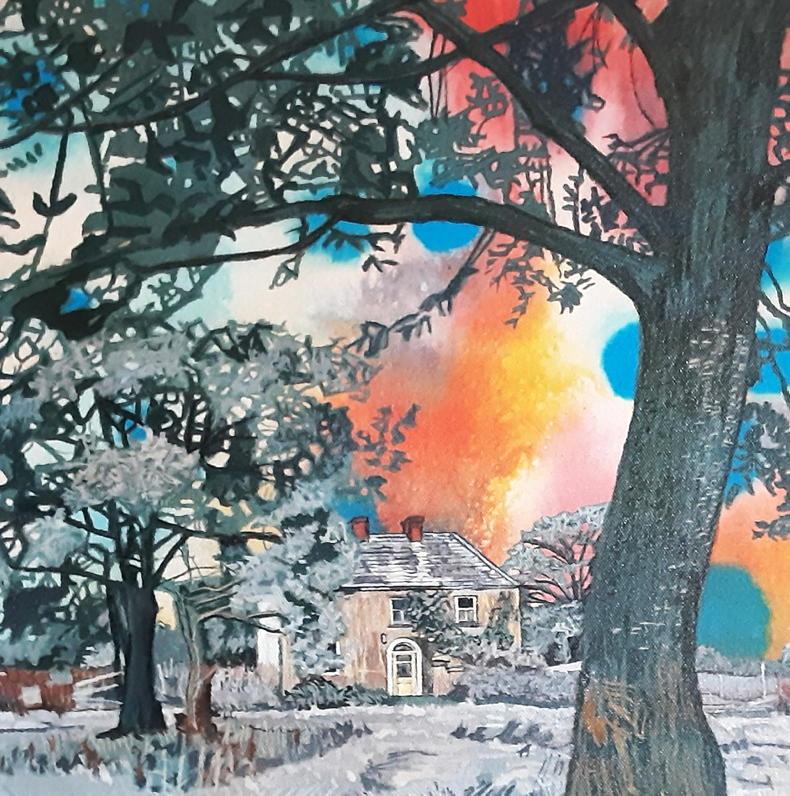
“I would have been quite successful before the kids and then when the kids came along, I just kept my toe in the art world. I did a lot of art teaching and I still do a lot of artist facilitation.
“When this project came along, it was an engagement programme with the farmers, but it actually was really beneficial for me, because it was nearly like an engagement programme to get back into my own work as well.”
Rachel hopes that going forward the book will help her get her work back into galleries again.
From a family of six children, Rachel says she and her siblings were always into art and drawing. She tried to convince her twin brother to attend art college with her, but no luck. He went on to do computers instead.
After school she did a portfolio course and then went to Crawford College of Art and Design in Cork for four years. After completing her third year, she was approached by University College Cork (UCC) to do a solo show there that summer.
“My mum was very ill at the time,” Rachel explains. “So I stayed at home for the summer and stayed with my mum. I did the exhibition in UCC. It went really well and I sold really well. Then I realised this is what I’m aiming for; I’m going to be an artist and I headed into my degree year.
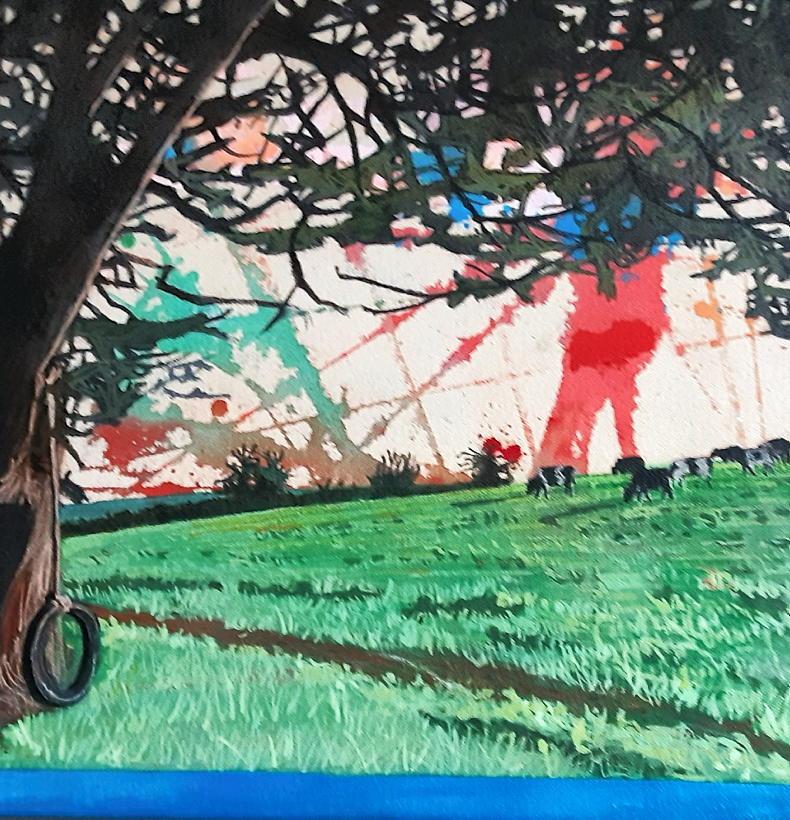
“I was in my final year and things were going well in college, but my mum died that year. So that’s what actually made me focus on the home place and how I felt trying to get in touch with my own identity.”
“When I graduated it was 2000 and the country was booming. Up until I had the kids I was able to live fulltime off my own art, just being part of galleries.”
Her husband Ruairí also went to Crawford, that’s where they met. But they didn’t start dating until years later when he came to an exhibition she had in Kilkenny.
Interestingly, there was a point when Rachel thought her life on the farm had finished.

“I would have thought I would never live on a farm again. I lived in Cork and then I moved to Dublin. I would have travelled a lot as well. When I did meet up with Ruairí again, he was looking after his dad in Kilkenny who was ill.
“He accidentally fell into farming. He was here; sculpting and farming. I thought it was mad then that we actually ended up back on the farm. Initially when I did move back from Dublin, I thought it would be easier because I grew up on a farm, but it wasn’t.
“It was a bit of culture shock, because you’re used to cycling around Dublin, going here and there. But I love it now. I would find it very hard to flip back the other way. I do find it really inspiring, just having space to think.”
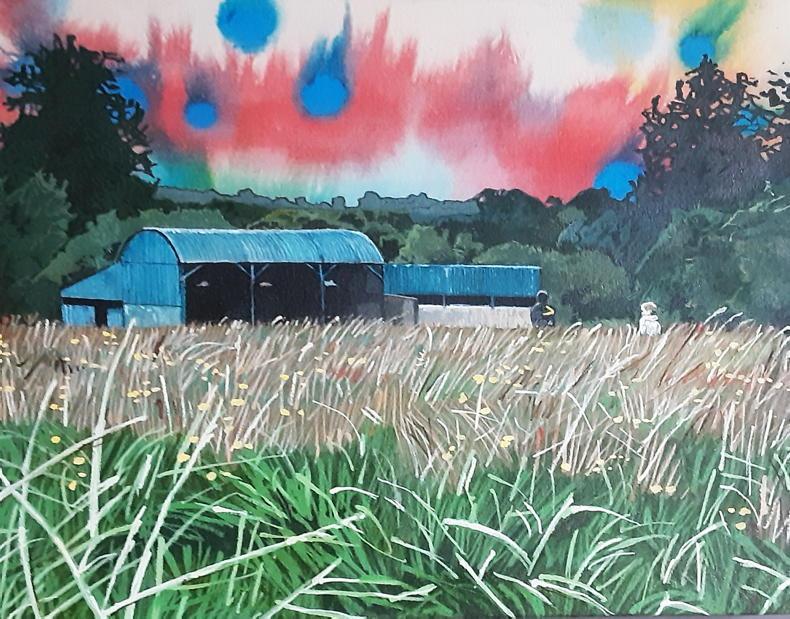
“I work on a raw, un-primed canvas,” Rachel says. “I prime the canvas from behind and then stretch it onto a frame.
“I start with putting the ink onto the canvas and letting it bleed. Then I would seal it off with water-based varnish and paint over it. If I just kept on painting over it with inks, they would bleed into each other.
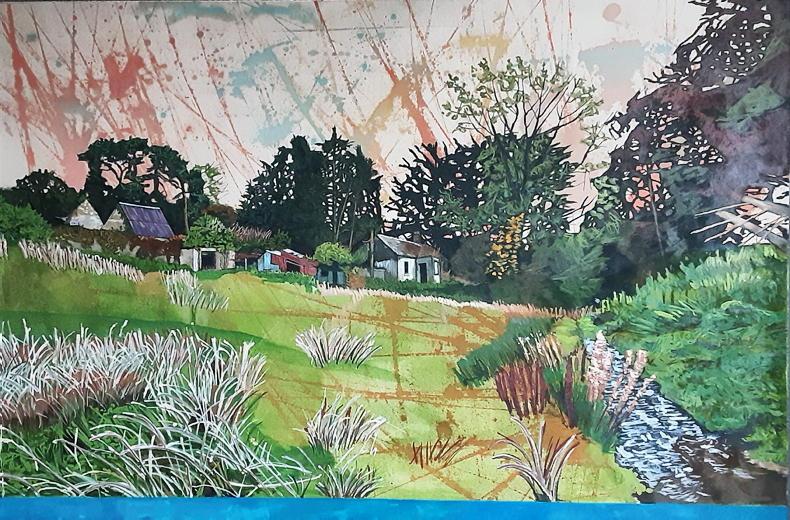
“I want sharp lines too, where it’s quite real on an abstract background. I use raw canvas because it gives a very earthy feel.
“I leave some of the raw canvas exposed, I don’t cover it all in paint, so that you can get that natural feel.”
Read more
The Front Row: painting an island
My Country Living: 'I'll carry on making my work about agriculture'
As an art student finishing her degree, Rachel Burke’s final year project revolved around her home place - the family dairy farm in Newtownshandrum, Co Cork.
In the intervening years she has adopted a new farm and home place in Threecastles, Co Kilkenny, where she lives with her husband Ruairí Carroll and their three children.
“I’ve three boys, so they’ve made me a Kilkenny woman. Although my dad would hate to hear that,” Rachel adds dubiously.
I ask the defining question, who does she support in the hurling?

“I’m on both fences. When my own lads have their Kilkenny jerseys on, I support Kilkenny.”
But one home place is not necessarily lost in finding another. A recent project of Rachel’s has brought her painting back to where it first began - on the farm.
Last year Kilkenny County Council and Creative Ireland put a call-out looking to fund a project for an artist, on the premise they would engage a group that had limited access to arts and creativity. An exhibition of the work would take place, as well as a book based on the paintings being produced.
Rachel had just the idea.
“My husband’s a beef farmer and a sculptor,” she says. “I do feel sometimes farmers can be a little bit isolated.
“So I came up with the idea of engaging local farmers and I designed a project around that. I could do a painting of their home place. They would give me the guidance as to what they wanted.”
Before Rachel submitted her proposal, she got in touch with the local IFA branch to see would farmers be interested. Some were sceptical at first, but overall she got a great response.

She was awarded the funding based on her proposal and had individual introductory meetings with all the participating farmers before the pandemic.
Rachel describes the project as a “visual history of Threecastles”. She also included her father’s farm in Cork, as well as her and Ruairí’s farm.
“It was actually really great going to meet all the farmers. I’d go to their houses and they’d have all the buns and cakes out. They were very welcoming.
“They’d be going through all the old photos and they really got on board. They walked me around the farm, we took photos and talked about the history.”
A key part of Rachel’s project was that she wanted to portray the farm as the farmers saw it.

“There were some farmers and they had really good old photos. Some from years ago where they’re harvesting and they’d be sitting down drinking tea. I put those into paintings. Other people, they had really old buildings they wanted to use. One farmer just wanted a cow in the field. They said they wanted this particular thing and I would do it in my own style.”
Originally, the exhibition was supposed to be held in March, but it was pushed to October due to the lockdown and then again to December because of the second lockdown. It took place on the weekend of 4 and 5 December, when the book was also launched.
This allowed Rachel to create a much larger body of work than expected, doing up to four paintings on some farms.

Overall, the project was a great success. So much so that Rachel has applied for funding to work with the women of Threecastles on a further project. The proceeds from the book are going towards the local hall.
As part of the project Rachel also had to bring the paintings to the local primary school and facilitate a response project with the pupils.
Although the project was done on the basis of engaging a group in art that wouldn’t normally have access, Rachel feels farmers are far more creative than they’re often given credit for.

“I think the farmers really enjoyed the fact that you were engaging with them. I think a lot of farmers, they’re really poetic, they’re really deep and they’re really connected to the land.
“They actually loved seeing the paintings too. With my work there are abstract backgrounds and it does look like you’re almost capturing a memory. It’s not photo realistic.”
For Rachel, the project deepened her connection with Threecastles and also got her back painting fulltime.

“I would have been quite successful before the kids and then when the kids came along, I just kept my toe in the art world. I did a lot of art teaching and I still do a lot of artist facilitation.
“When this project came along, it was an engagement programme with the farmers, but it actually was really beneficial for me, because it was nearly like an engagement programme to get back into my own work as well.”
Rachel hopes that going forward the book will help her get her work back into galleries again.
From a family of six children, Rachel says she and her siblings were always into art and drawing. She tried to convince her twin brother to attend art college with her, but no luck. He went on to do computers instead.
After school she did a portfolio course and then went to Crawford College of Art and Design in Cork for four years. After completing her third year, she was approached by University College Cork (UCC) to do a solo show there that summer.
“My mum was very ill at the time,” Rachel explains. “So I stayed at home for the summer and stayed with my mum. I did the exhibition in UCC. It went really well and I sold really well. Then I realised this is what I’m aiming for; I’m going to be an artist and I headed into my degree year.

“I was in my final year and things were going well in college, but my mum died that year. So that’s what actually made me focus on the home place and how I felt trying to get in touch with my own identity.”
“When I graduated it was 2000 and the country was booming. Up until I had the kids I was able to live fulltime off my own art, just being part of galleries.”
Her husband Ruairí also went to Crawford, that’s where they met. But they didn’t start dating until years later when he came to an exhibition she had in Kilkenny.
Interestingly, there was a point when Rachel thought her life on the farm had finished.

“I would have thought I would never live on a farm again. I lived in Cork and then I moved to Dublin. I would have travelled a lot as well. When I did meet up with Ruairí again, he was looking after his dad in Kilkenny who was ill.
“He accidentally fell into farming. He was here; sculpting and farming. I thought it was mad then that we actually ended up back on the farm. Initially when I did move back from Dublin, I thought it would be easier because I grew up on a farm, but it wasn’t.
“It was a bit of culture shock, because you’re used to cycling around Dublin, going here and there. But I love it now. I would find it very hard to flip back the other way. I do find it really inspiring, just having space to think.”

“I work on a raw, un-primed canvas,” Rachel says. “I prime the canvas from behind and then stretch it onto a frame.
“I start with putting the ink onto the canvas and letting it bleed. Then I would seal it off with water-based varnish and paint over it. If I just kept on painting over it with inks, they would bleed into each other.

“I want sharp lines too, where it’s quite real on an abstract background. I use raw canvas because it gives a very earthy feel.
“I leave some of the raw canvas exposed, I don’t cover it all in paint, so that you can get that natural feel.”
Read more
The Front Row: painting an island
My Country Living: 'I'll carry on making my work about agriculture'














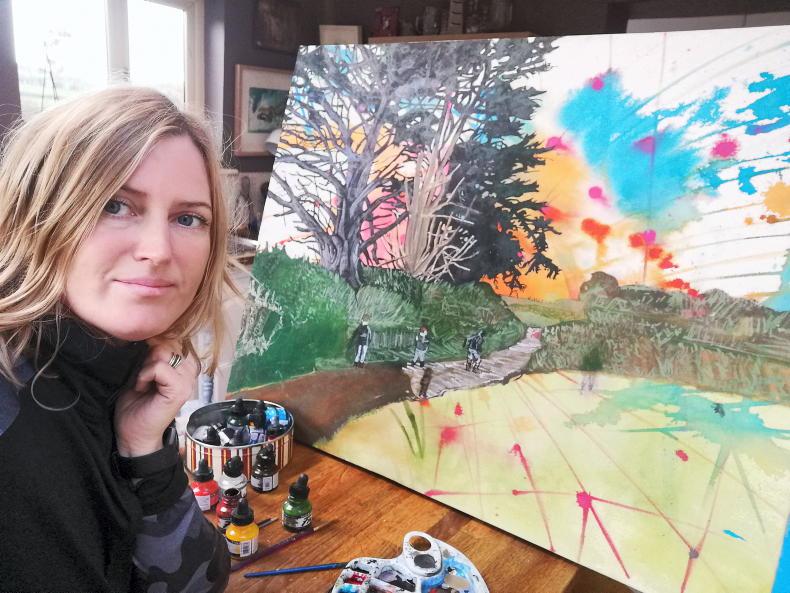
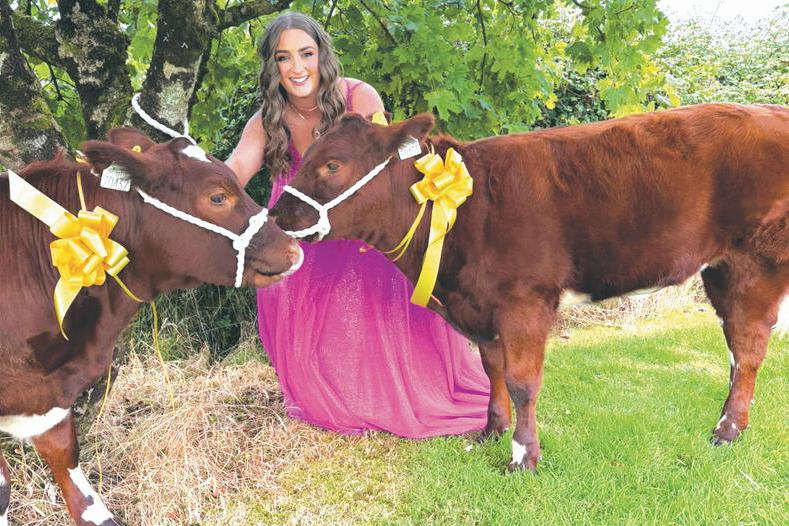
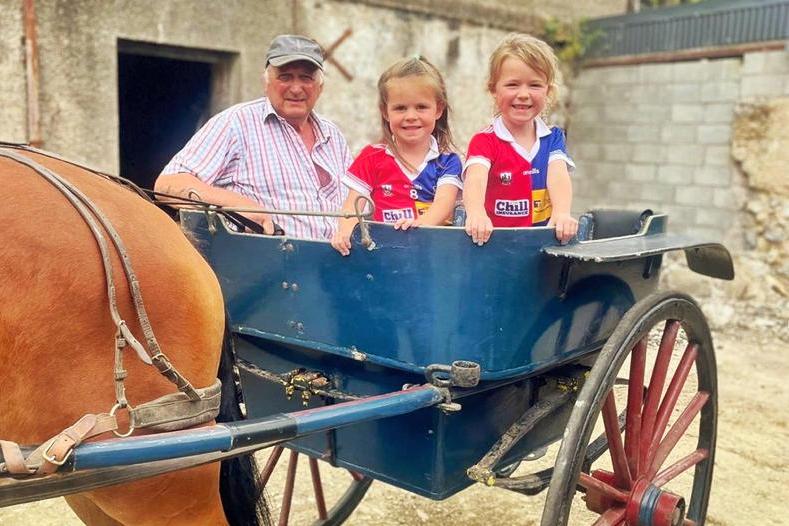
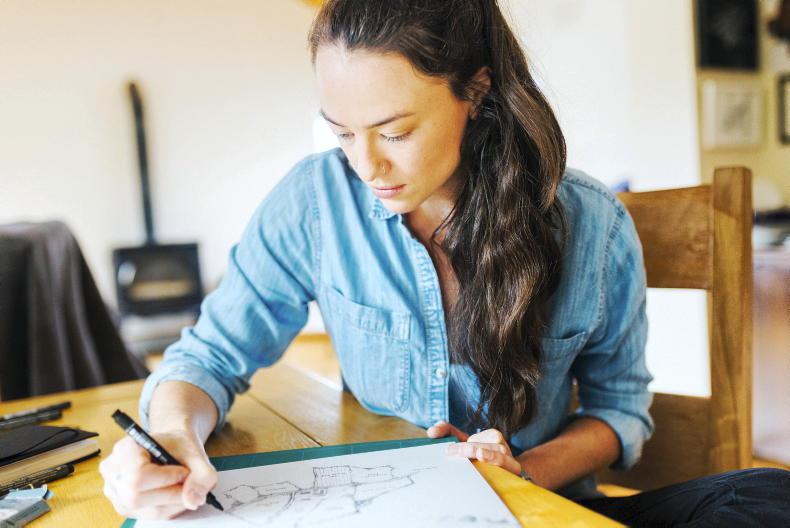
SHARING OPTIONS